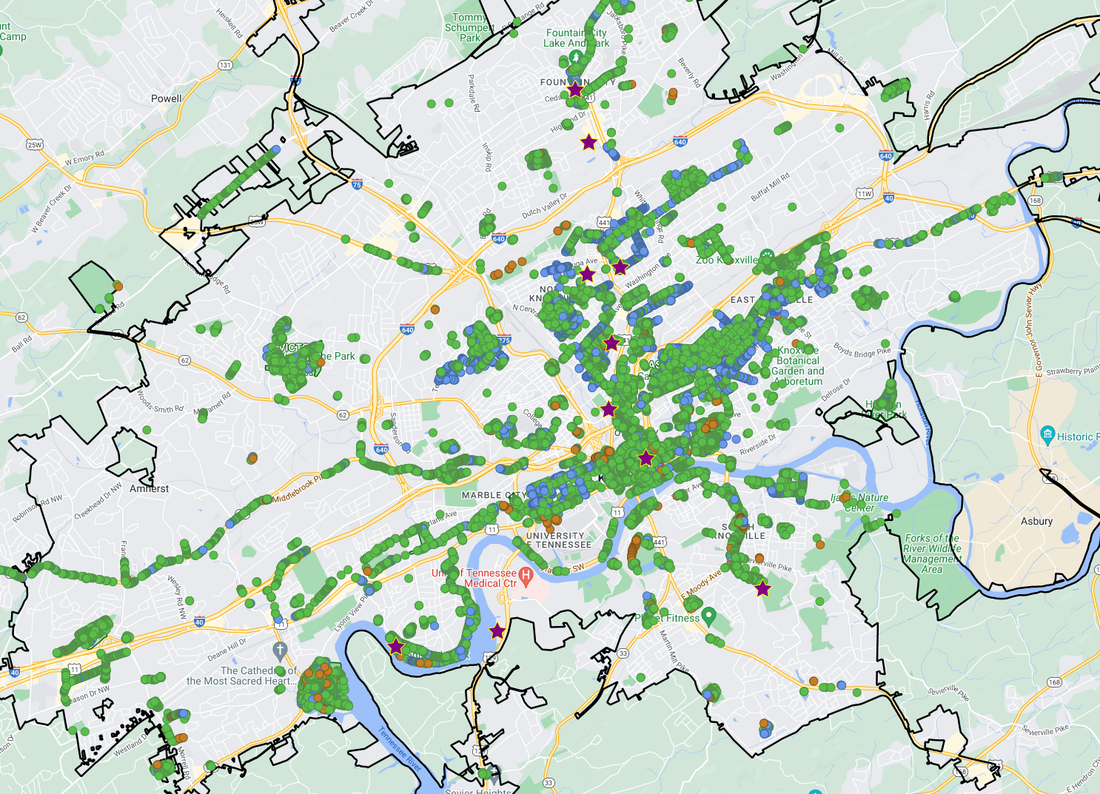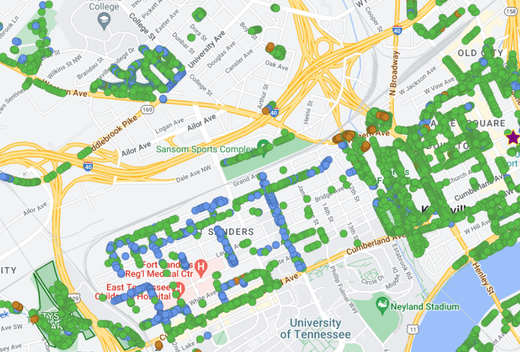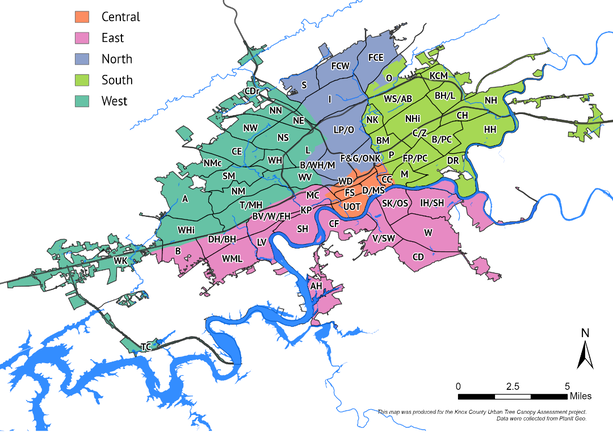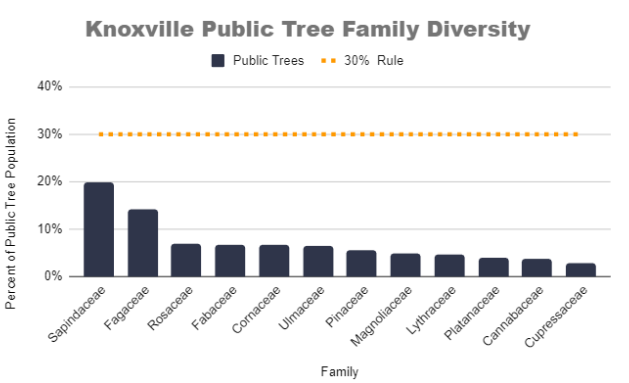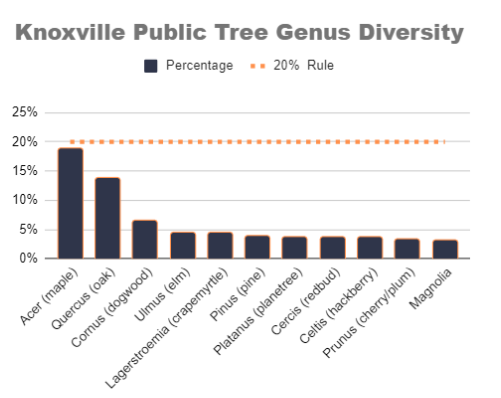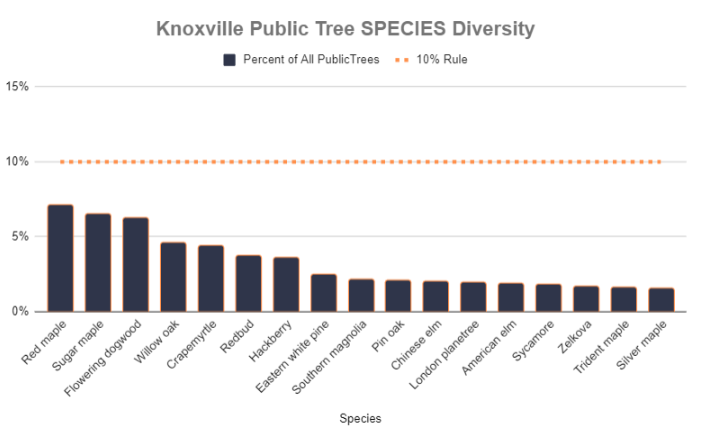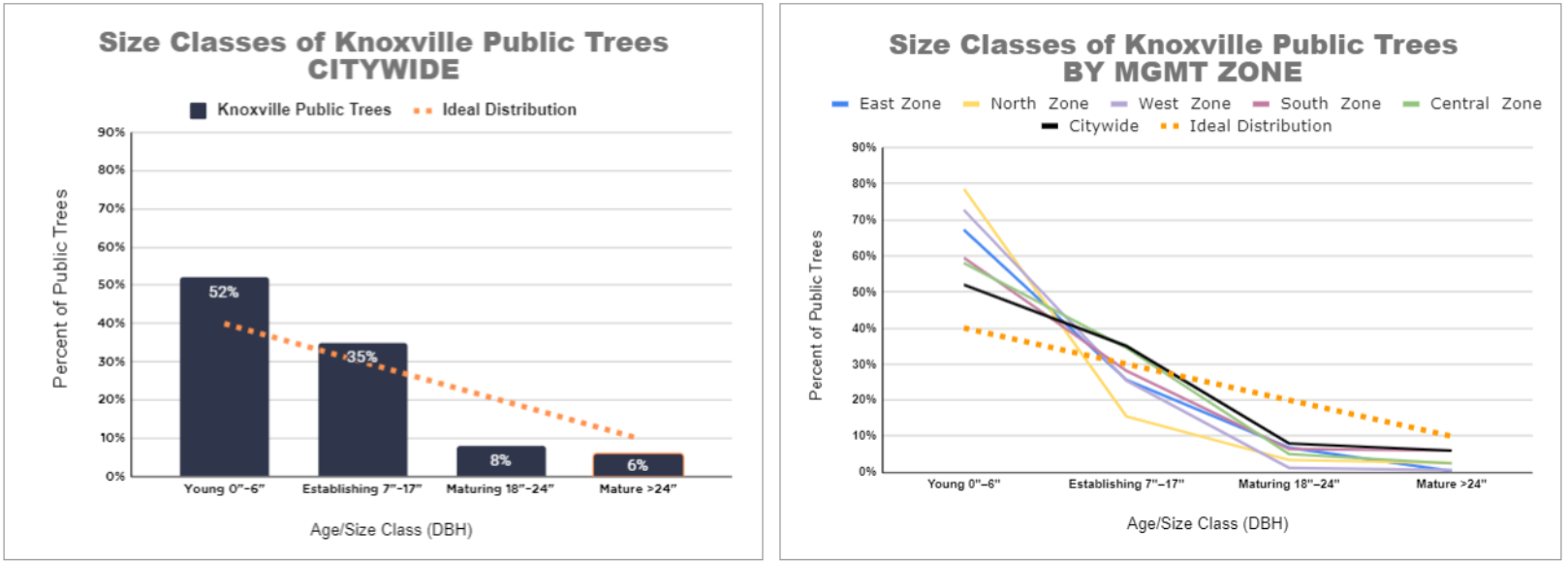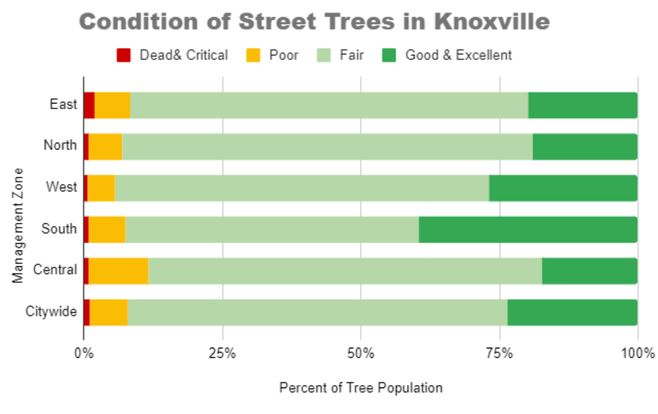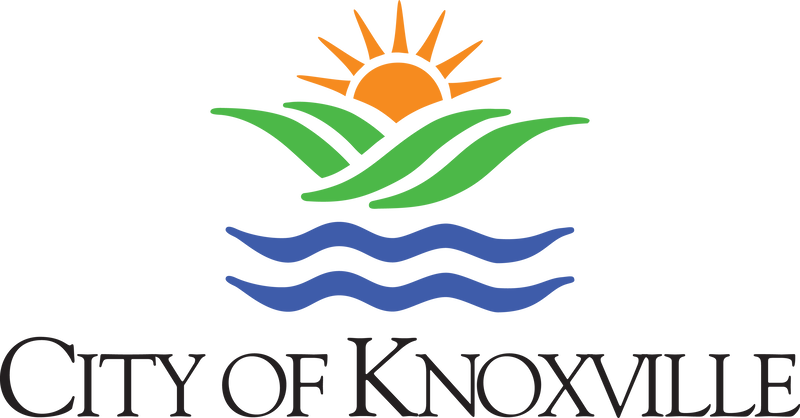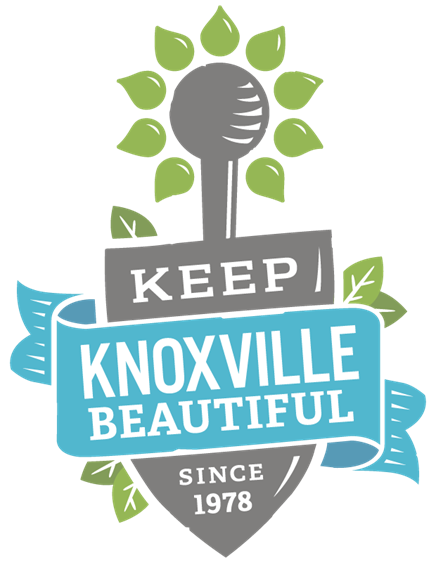Street and Park Trees in Knoxville
The City of Knoxville maintains an inventory of over 25,000 public trees, including street and park (landscaped areas) trees. This information is collected by physically visiting each tree on public land and collecting multiple data on that tree and is stored and regularly updated in a GIS-based tree management software (see images of this system below). This information is also available to the public via this online public tree inventory viewer. Inventory data is also critical to manage trees, and is essential for planning and budgeting for annual tree care and planting.
There is limited information or assessment data available on city-owned natural areas and woodlands in Knoxville.
There is limited information or assessment data available on city-owned natural areas and woodlands in Knoxville.
|
The City Forester manages these trees by dividing them into five management zones (shown at right). Each year, one zone is proactively pruned and provided with an additional care necessary, and inventory data is updated as appropriate. This kind of "cyclical, proactive care" is considered a national best practice.
|
With complete inventory data, it is possible to examine the diversity, size and condition of Knoxville public trees.
Diversity
|
Pests and diseases often target one genus or other grouping of trees. To avoid significant losses in the future, it is important to have a diverse population of trees. There is a general rule for how much of one family, genus and species we should have:
In Knoxville, the public tree population is very diverse (no threshold is exceeded), as shown in the charts below. This means that the public tree population is well suited to deal with pests or diseases that may emerge. |
About Tree Species. Living things are categorized into Family, then Genus, then Species. Example:
FAMILY: Aceraceae GENUS: Maple SPECIES: Red maple |
Age Distribution
|
In Knoxville, there are more trees in the younger categories, in large part due to the increase in tree planting over the last decade. However, there are much fewer mature trees than is considered ideal. There should be 20% in the "Maturing" stage, and 10% in the Mature stage. In Knoxville there is only 8% and 6% respectively (see charts below).
Larger trees provide more community services, as they intercept more stormwater, sequester more carbon, and remove more air pollution. As such, ensuring our young trees make it to maturity, as well as preserving our large trees should be a high priority when possible. Note: Size of trees is not complete accurate indication of tree ages, as different species grow at varying rates and have varying mature sizes. However, it is close enough to provide an accurate picture of approximate distribution of ages. |
Mature trees provide exponentially more to a community. For example, A large healthy tree (over 30" in trunk diameter, or DBH) can remove 70 times more air pollution in one year than a small healthy tree (8" trunk diameter, or DBH).
|
Condition of Public Trees
Detailed understanding of the condition and risk potential of all publicly-owned trees is critical. It is an important indicator of risk to citizens and where tree work is required, but also provides a glimpse into future canopy. The majority of public trees in Knoxville are in fair or better condition.

